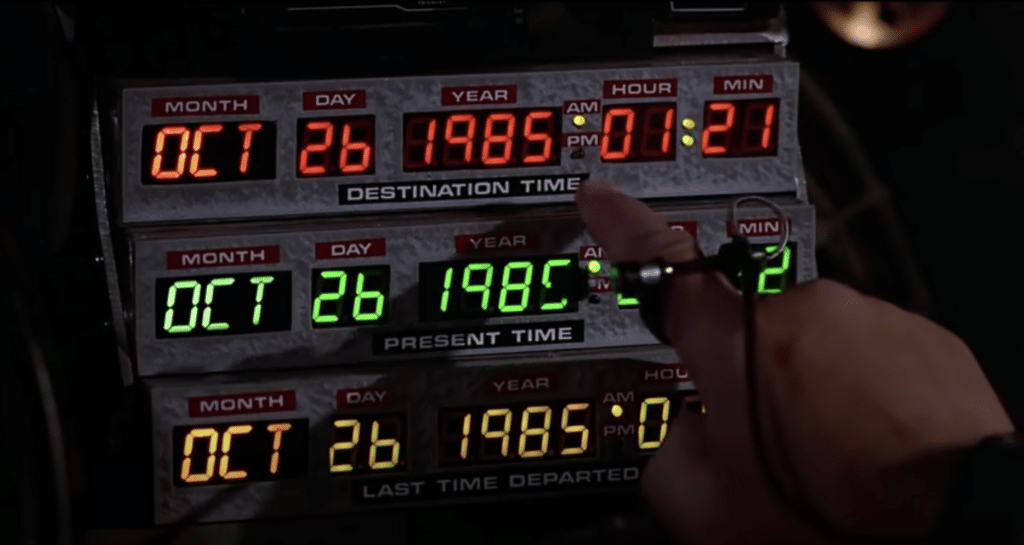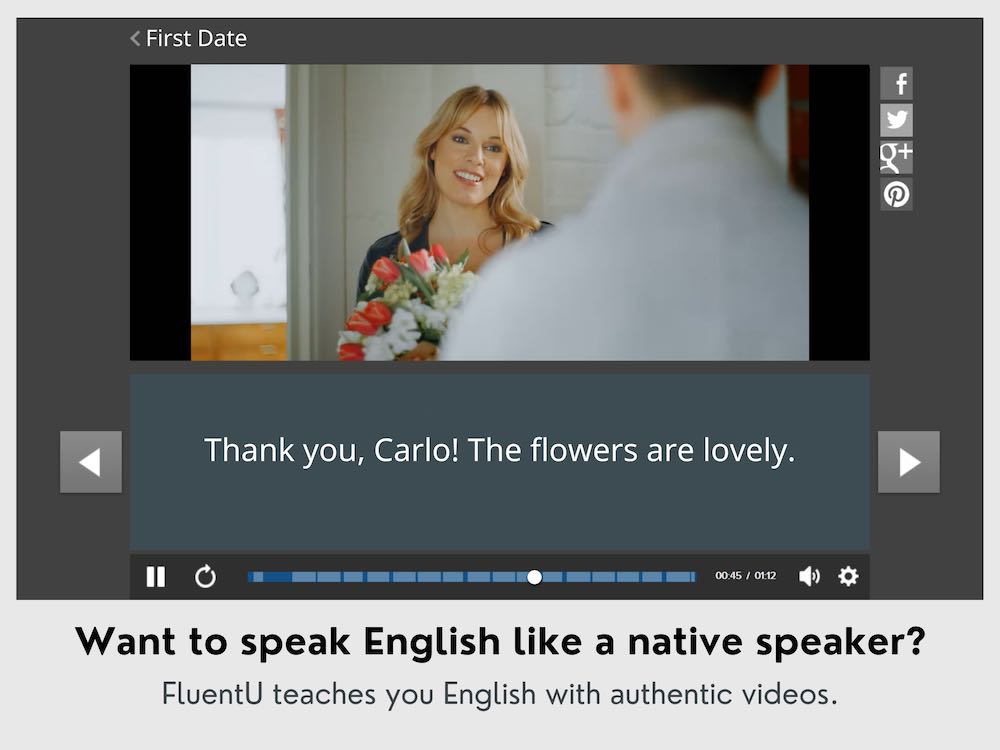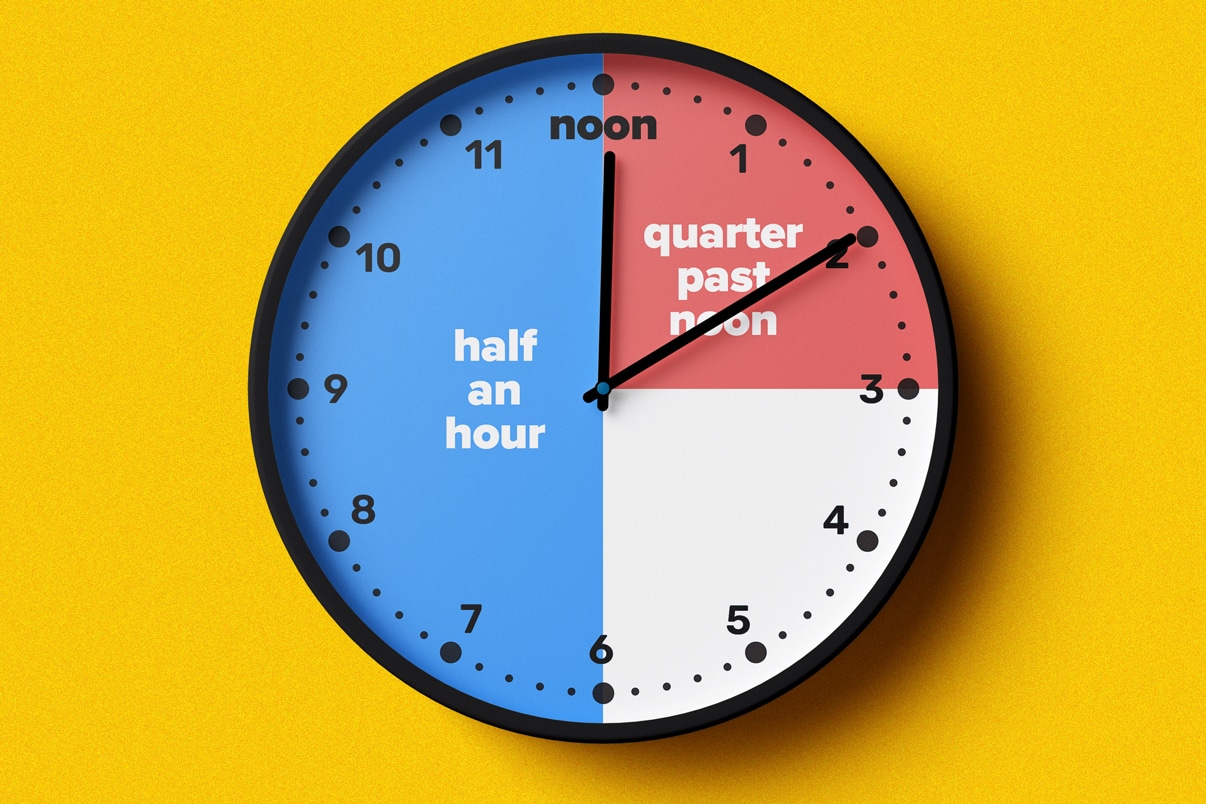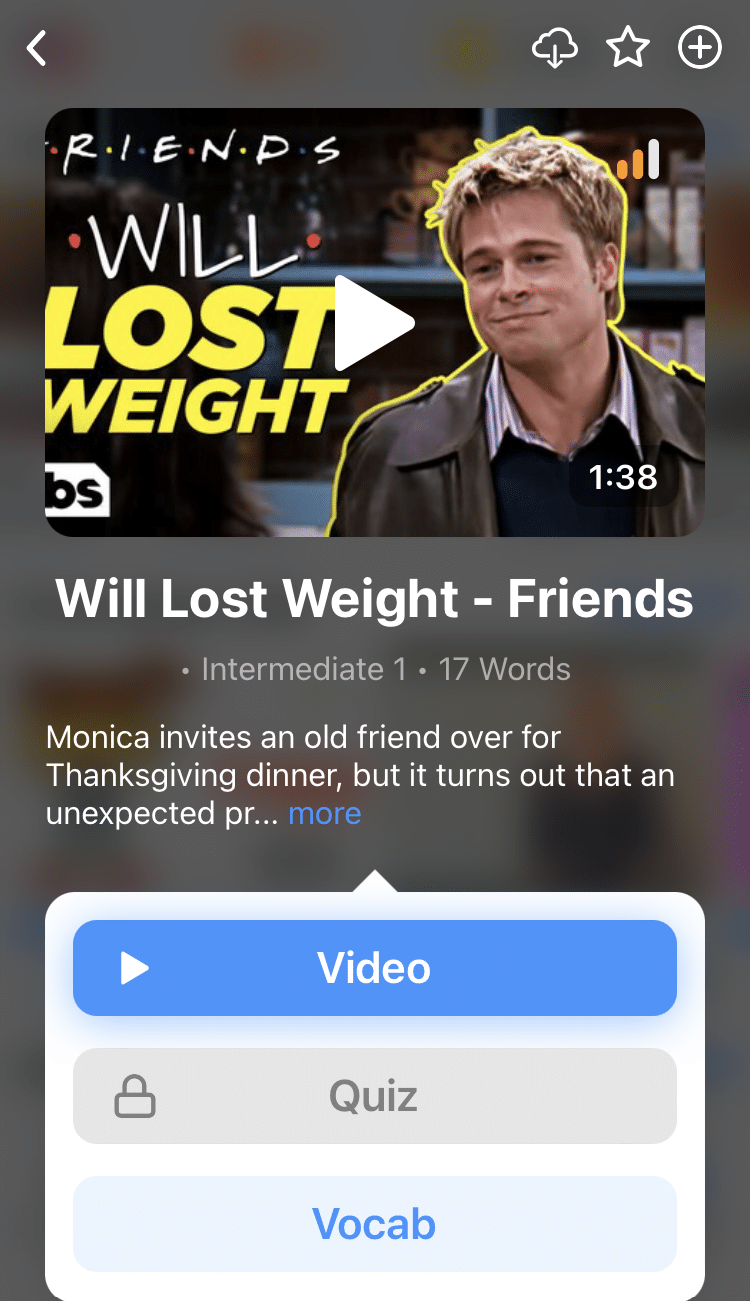
How to Tell Time in English
Everyone studies numbers when they first start learning a new language.
However, talking about time involves more than the numbers on the clock.
Being able to ask questions and talk about time is fundamental to speaking any language, and that’s also true if you’re a beginner learning English.
Using this post, you will learn every English word and phrase you need to tell time like a natural!
Contents
- 1. Learn to Talk About the Time of Day
- 2. Say the Hours
- 3. Use O’clock
- 4. Know About Morning, Afternoon, Evening and Night
- 5. Use a.m. and p.m.
- 6. Describe the Exact Time in Minutes
- 7. Use Military Time
- 8. Use Classic Phrases from History
- 9. Be More General
- And One More Thing...
Download: This blog post is available as a convenient and portable PDF that you can take anywhere. Click here to get a copy. (Download)
1. Learn to Talk About the Time of Day
Numbers may tell you the exact time. However, many people will talk about the general time of day instead of being specific. Here are words that you may hear and use when the exact time is not very important.
Noon
Noon means 12:00 p.m., at the very beginning of the afternoon.
“What time are we meeting this weekend?”
“Around noon, so we can sleep in.”
Midday
This sometimes means the same thing as noon, because noon is in the middle of the day. Midday can also be any time between 11:00 a.m. and 2:00 p.m.
This is basically when people begin and finish eating lunch (meaning the middle of the day).
“It is supposed to be very hot and sunny today at midday.”
Afternoon
Because this phrase means “after noon passes” it is really versatile. This can be any time between noon (12:00 p.m.) and before the sun sets (usually around 6:00 p.m.). If you do not live on the equator, the time of the sunset is always changing with the seasons. Sunset might be at 4:00 p.m. in the winter and 9:00 p.m. in the summer. This means that “afternoon” can be shorter or longer depending on the season.
“I’m busy all afternoon so let’s have dinner together tonight.”
Midnight
Midnight means the middle of the night. However, now many people use it to mean 12:00 in the morning (12:00 a.m.), when the next day begins.
The phrase midnight hours refers to any time between 12:00 a.m. and 3:00 in the morning (3:00 a.m.).
“People kiss on New Years Eve at midnight.”
Twilight
“Twilight” may just be a popular book and movie series to some people, but twilight is actually the time when the sun is barely (very slightly or very little) lighting up the sky. This is usually right before the sun rises or right after the sun sets. The best way to remember this time is that it is in-between when one day is ending and when the new day is starting, and the sky has a blue or purple tint (slight color).
“I love the way that the trees look at twilight.”
Sunset and Sunrise
When the sun is setting (going down) or rising (going up) you can call these times sunset and sunrise. Sunset is right before twilight, when the sky starts to turn pink and orange but is not dark yet. Sunrise happens when the sun starts to come up in the morning (after morning twilight happens) and has the same orange and pink colors as sunset.
“Let’s climb the mountain before sunrise so we can watch the sun come up.”
“I would rather leave in the afternoon and watch the sunset.”
After Dark
The time of day that is after dark is usually between 9:00 at night and 1:00 in the morning, or even later. It can also be a phrase for when nightlife starts in a city, and people go out to drink or dance when the sun has set completely. A good way to remember this time is that if most people are asleep or going to sleep soon, it is after dark.
“Have you ever been to LA after dark?”
“No, but I heard that it gets crazy.”
The Crack of Dawn
The actual time for the crack of dawn is when you first start seeing light in the sky, but the sun is not visible yet. People often use this term for waking up before the sun, or just very early, around 4:00 and 6:00 in the morning.
“If we want to beat the traffic tomorrow we will need to wake up at the crack of dawn.”
2. Say the Hours
When you tell the time in English, the hours always come first. If you look at the clock and see that it is 3:00 p.m., then you can say “It is three” or “The time is three o’clock.” It is that simple!
Remember that when you are talking about just the hour, and no minutes, then you will often use “o’clock.”
3. Use O’clock
O’clock is shortened from an old phrase meaning of the clock, and is something that you can say after you tell what hour it is. However, you only use this when telling the hour. If you need to include minutes, then you cannot say o’clock.
“Sir, do you know what time it is now?”
“It is twelve o’clock in the afternoon.”
You can do this with one o’clock (1:00) all the way to twelve o’clock (12:00).
4. Know About Morning, Afternoon, Evening and Night
There are only twelve hours written on a clock in any part of the English-speaking world. This may be true in the region where you live too. This is a very common system for telling time. However, that means it will be 6:00 twice every day, once in the morning and once in the nighttime! So, how do you talk about 6:00 in the morning and 6:00 at night?
Quite simply, you can say exactly what time of day you are talking about. For example:
Morning (from 12:00 a.m. to 12:00 p.m.):
1:00 a.m. — It is one in the morning.
6:00 a.m. — It is six in the morning.
11:00 a.m. — It is eleven in the morning.
Afternoon (from 12:00 p.m. to sunset):
1:00 p.m. — It is one in the afternoon.
3:00 p.m. — It is three in the afternoon.
4:00 p.m. — It is four in the afternoon.
Evening (from 5:00 p.m. to 8:00 p.m.):
6:00 p.m. — It is six in the evening.
8:00 p.m. — It is eight in the evening.
Night (from 6:00 p.m. to 12:00 a.m.):
7:00 p.m. — It is seven at night.
9:00 p.m. — It is ten at night.
5. Use a.m. and p.m.
When you say something is at six o’clock you should let the person know if you mean a.m. (morning) or p.m. (night). These words are abbreviations for the Latin terms “ante meridiem” and “post meridiem,” which mean before midday and after midday.
“I think I overslept, what time is it now?”
“It’s 12:30.”
“12:30 a.m. or p.m.?”
“12:30 p.m.“
6. Describe the Exact Time in Minutes
When you are telling the exact time in minutes, the way that you pronounce the time can be different. For example, when saying 3:05, 3:06, etc. you would pronounce it as “three oh five” or “three oh six,” similar to saying “o’clock.” This is because sometimes we call zero (0) “oh” in English, and saying “oh five” is faster and easier than saying “zero five.”
All other minutes from 10 to 59 are pronounced normally (“ten” and “fifty-nine”). However, there are many other ways to talk about minutes other than saying the exact number.
Half an Hour
Since an hour is 60 minutes, half of an hour is 30 minutes. It does not have to be exactly 00:30 for you to use the term half an hour, you can use it for times between 25 and 35 minutes.
“How much longer until 6?”
“About half an hour.”
Quarter of an Hour
Since half an hour is thirty minutes, a quarter of an hour is 15 minutes. You can use the term quarter along with past and until when telling the time. For example, 7:45 is “a quarter till eight“ and 8:15 is “a quarter past/after eight.” We will talk more about these words, past and until, later in this article, so keep reading!
You can still say “quarter” if the number of minutes you have is between 12 and 17.
“How much longer until 6?”
“About a quarter of an hour“
“What time is it right now?”
“A quarter until nine.”
7. Use Military Time
If you do not want to use a.m. or p.m., you may want to go by what Americans call military time.
With this method of counting the hours in the day you start with 00:00 at midnight (12:00 a.m.) and count up from there until 23:59 for 11:59 p.m.
People will also pronounce this differently, so instead of saying “twenty three and zero minutes” for 23:00, you would say “twenty three o’hundred.”
“You need to report to the office at fifteen hundred hours today. After that,f you can leave at seventeen o’fifty.”
8. Use Classic Phrases from History
When the Clock Tolls/When the Bell Chimes
These are both older terms for telling time, because they are based off of large clock towers, such as Big Ben in England.
Both a toll and a chime mean to ring a bell. In churches and town centers (and sometimes in clocks found in houses), the bell would chime every new hour. So, there are times that you can say you will do something at the start of the next hour using these phrases. You will probably hear this more often in older films and books, and sometimes as a joke.
“I’ll see you after the clock tolls one.”
9. Be More General
Maybe you do not want to use a very exact time, like 7:56. However, you also do not want to be too general by saying “evening” (between 5:00 and 8:00 at night). You can use the terms below to quickly tell around what time it is, without the need to be exact.
Past and Till
You can use these along with any combination of words about time. Which one you use depends if you are counting forwards or backwards.
6:30 can either be half past 6 or it can be thirty minutes till 7. (Till is the more casual way of saying until, you can use either depending on the situation.)
10:30 p.m. — Half past ten. / Thirty minutes till 11.
11:30 a.m. — Half past eleven. / Thirty minutes to 12.
Couple and Few
A couple of anything generally means two of something. If you say that you have a couple minutes, it means about two or three minutes. A few usually means three to five of something, so a few minutes is a little bit longer than a couple. Still, they are usually used in the same way.
Both can tell people that there is only a short amount of time left before something, or can make the time of day less specific. You can use couple and few with minutes or hours.
“How long until we leave?”
“A few minutes.”
“What time is it now?”
“A couple minutes past five.”
Five, Ten or Twenty
When telling the general time people usually count in either fives, tens or twenties. For example, it is much more common to hear a person say “five past eight” than to hear “four past eight.” If a person wants the exact time you can tell them, but a good rule is to count in groups of five since minutes are very short anyways.
“Do you know what time it is now?”
“About ten minutes past midnight.”
“And when do the trains stop running?”
“At twenty after twelve.”
Now you know all the different ways to answer the question “what time is it?” with ease. But don’t stop here—use the information you learned in this post when you’re having conversations in English. The more you practice them, the better you’ll be at using them!
Even if you don’t have anyone to practice with, hearing these words and phrases in use is an excellent way to learn them. You can find many video examples of these and other natural English use, on the FluentU program.
FluentU takes authentic videos—like music videos, movie trailers, news and inspiring talks—and turns them into personalized language learning lessons.
You can try FluentU for free for 2 weeks. Check out the website or download the iOS app or Android app.
P.S. Click here to take advantage of our current sale! (Expires at the end of this month.)

It takes practice, but you will be able to say all of these vocabulary words naturally in no time!
Download: This blog post is available as a convenient and portable PDF that you can take anywhere. Click here to get a copy. (Download)
And One More Thing...
If you like learning English through movies and online media, you should also check out FluentU. FluentU lets you learn English from popular talk shows, catchy music videos and funny commercials, as you can see here:
The FluentU app and website makes it really easy to watch English videos. There are captions that are interactive. That means you can tap on any word to see an image, definition, and useful examples.
For example, when you tap on the word "searching," you see this:
Learn all the vocabulary in any video with quizzes. Swipe left or right to see more examples for the word you’re learning.

FluentU helps you learn fast with useful questions and multiple examples. Learn more.
The best part? FluentU remembers the vocabulary that you’re learning. It gives you extra practice with difficult words—and reminds you when it’s time to review what you’ve learned. You have a truly personalized experience.
Start using the FluentU website on your computer or tablet or, better yet, download the FluentU app from the iTunes or Google Play store. Click here to take advantage of our current sale! (Expires at the end of this month.)












